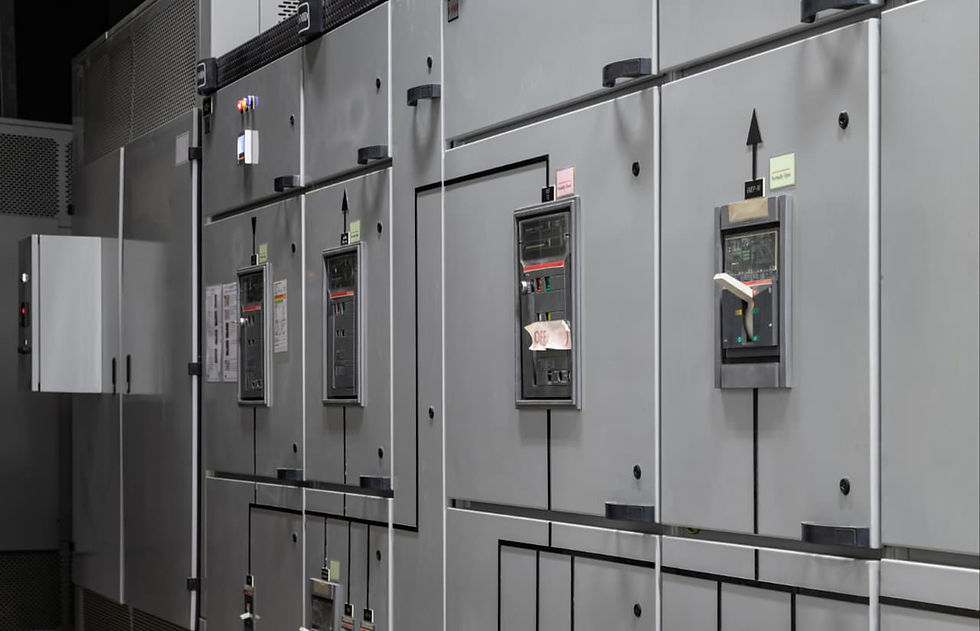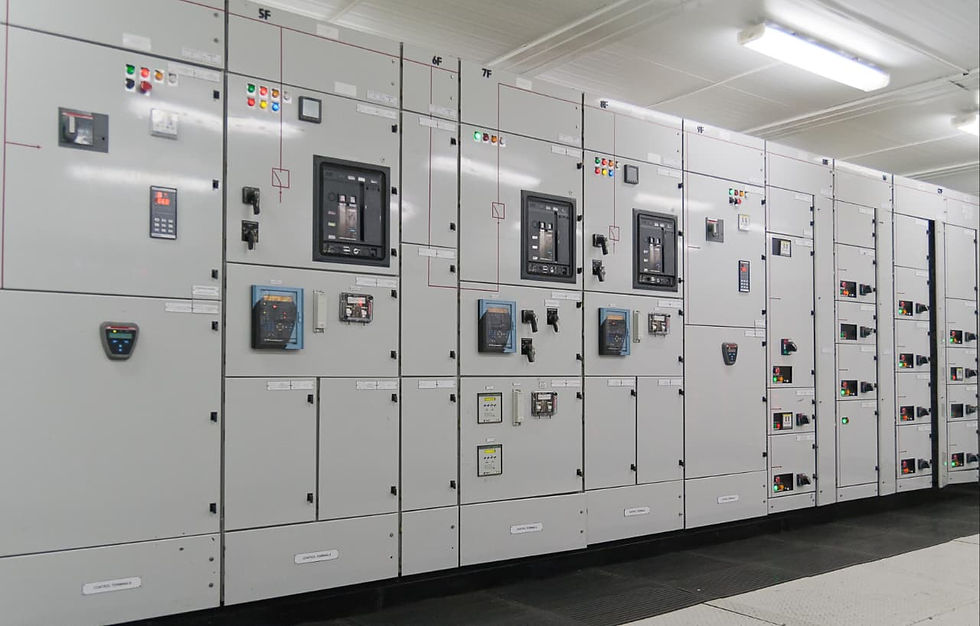Primary Distribution Cells
- Grupo Edmar

- Sep 19
- 5 min read
September 19, 2025 - Primary Distribution Cells

Primary Distribution Cells
Primary distribution cells are a vital element in the planning and operation of electrical projects, as they typically work in conjunction with transformers, disconnectors, and other equipment that are part of the medium-voltage infrastructure.
Knowing what they are, how they work, their types, selection criteria, and care is essential for achieving safer, more efficient, and longer-lasting installations.
What is a primary distribution cell and what is it used for?
A primary distribution switchgear is a closed set of electrical equipment used in substations and medium-voltage systems, typically between 1 kV and 36 kV. It is designed to protect, switch, measure, and control power before it reaches transformers or the secondary distribution network.
Its importance lies in the fact that:
It allows specific areas to be isolated in the event of a failure, avoiding general blackouts.
Ensures the continuity of electrical service , essential in industries, hospitals, data centers, and urban infrastructure.
Reduces the risk of electrical accidents to operating personnel.
Optimizes load distribution, avoiding overloads at certain points in the network.
In other words, without primary distribution cells, the electrical system would be more vulnerable to failures and much less safe.
Fundamental components of a primary distribution cell.
A well-designed cell integrates various elements that work together:
Power switches : allow a circuit to be opened or closed under normal or fault conditions.
Switchgears : These physically isolate a section of the network so that personnel can work safely (refer to electrical disconnectors in the blog).
Protective relays : electronic devices that detect abnormal conditions such as overcurrent, short circuits or ground faults, sending signals to the switch to disconnect the system.
Measuring transformers : reduce current and voltage to safe levels for measurement and monitoring.
Busbars : These act as the “backbone” that distributes energy within the cell.
Metal cabinet or enclosure : protects components from dust, moisture, impacts and prevents unauthorized access.
Auxiliary systems : internal lighting, temperature sensors, communication modules or remote monitoring.
Each component is designed under specific standards (IEC, ANSI, NOM) to ensure safety and compatibility.

Types and Classifications of Primary Distribution Cells.
Cells can be classified into different categories:
According to the type of insulation
AIS (Air Insulated Switchgear) : These use air as an insulating medium, making them easy to maintain, but requiring more space.
GIS (Gas Insulated Switchgear) : These use SF6 gas or other environmentally friendly gases as insulation. They are compact, safe, and widely used in urban areas with limited space.
Solid insulation : These use epoxy resin or other solid materials, offering greater environmental resistance.
Depending on the location
Indoors : in plants, buildings or control centers.
Outdoors : in open substations, with weather-resistant cabinets.
According to its application
Industrial : to feed heavy machinery, ovens, production lines.
Urban : compact, ideal for cities where space is limited.
Renewables : integrated into solar or wind farms to transfer energy to the grid.
Practical example: In a densely populated city, GIS cells are installed due to their compact design, while in an industrial park with available space, an AIS cell may be more cost-effective.
Essential Criteria for Choosing the Right Cell.
Selecting the correct cell is key to avoiding future cost overruns or failures. Some critical points are:
Rated voltage and current level : must match the actual demand of the project.
Load type : constant (such as street lighting), variable (such as production lines) or critical (hospitals, data centers).
Environmental conditions : humidity, dust, vibrations, extreme temperatures, salinity (coastal areas).
Applicable regulations : IEC 62271, ANSI C37, Mexican NOM standards.
Safety : interlocking systems, clear signaling and protection against accidental contact.
Ease of maintenance : accessibility to components, availability of spare parts.
Scalability : possibility of adding more modules or outputs in the future.
Lifecycle cost : not only the initial price, but also operation, energy consumption, maintenance, and spare parts.
A common mistake is choosing based solely on initial price; however, a cheaper cell can result in much higher costs in repairs or unexpected failures.
Advantages of a well-designed Primary Distribution Cell.
The main advantages are:
Greater reliability : reduces interruptions and economic losses due to unexpected stops.
Enhanced safety : for both operators and connected equipment.
Flexible operation : allows circuits to be isolated for maintenance without shutting down the entire network.
Durability : Quality materials increase the lifespan of the installation.
Regulatory compliance : avoid fines, penalties, or audit rejection.
Energy efficiency : better load management, reduction of losses.
In industries with continuous production, these advantages can mean millions in savings per year.

Maintenance, Inspection and Useful Life.
A cell can last more than 30 years with proper care. Recommended practices include:
Monthly visual inspection : check connectors, hardware, pressure indicators in GIS cells.
Internal and external cleaning : avoid accumulation of dust, insects or moisture.
Insulation measurement : periodic dielectric tests to detect deterioration in insulators.
Thermography : Identify hot spots that could lead to short circuits.
Protection testing : relay calibration and verification of automatic trips.
Historical record : document each inspection, repair and anomaly detected.
Real-life example: A hot spot detected with thermography on the main busbar allowed a loose connection to be repaired before a major failure occurred.
Technological Trends in Primary Distribution Cells.
The electrical sector is constantly evolving, and cells are no exception. Some notable trends include:
Total automation : integration with SCADA systems and IoT platforms for real-time monitoring.
Compact and modular cells : ideal for growing cities or industries with limited space.
Ecological insulation : replacement of SF6 gas with less polluting gases.
Integration with renewables : increased use in solar and wind plants.
Digitalization : smart sensors to measure temperature, humidity and switch status.
These innovations not only improve security, but also reduce environmental impact and facilitate remote management.
Practical cases and application examples.
Industrial plants : A steel mill can install high-capacity AIS cells to power furnaces and machinery, isolating faults without affecting overall production.
Urban substations : GIS is used in central areas due to its small size and lower visual impact.
Data centers : They require absolute continuity, so remotely monitored cells can prevent failures before they occur.
Hospitals : installed with redundancy to ensure uninterrupted supply to medical equipment.
Primary distribution cells are essential for electrical systems to operate safely, reliably, and efficiently. Knowing how to select them, understand their components, and properly maintain them can make the difference in any electrical project, from an industrial park to an urban grid.



Comments